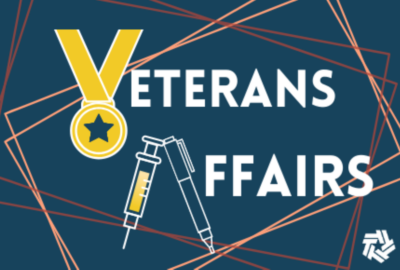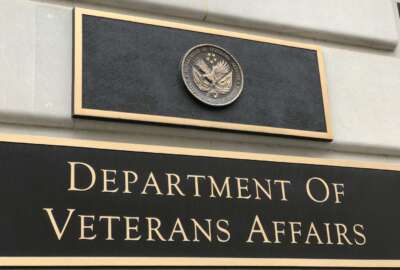

The Veterans Health Administration, amid a significant expansion of its health care workforce, is taking steps to ensure prospective hires receive a firm salary...
The Veterans Health Administration, amid a significant expansion of its health care workforce, is taking steps to ensure prospective hires receive a firm salary offer before accepting a job offer.
VA Undersecretary for Health Shereef Elnahal told reporters on Wednesday that change, in addition to ongoing hiring and onboarding reforms, will “vastly increase the competitiveness” of VHA, compared to private-sector health care providers that routinely provide up-front pay offers.
“That’s not something we’ve been able to do for various reasons up to this point, but we are changing that,” Elnahal said. “It’s hard for folks to accept jobs with tentative offers without a salary. That’s been one major limitation, especially for clinical staff,” Elnahal said.
Members of the House VA Committee said last month that discrepancies in the agency’s human resources department when coding positions are further contributing to confusion and a lack of transparency during onboarding for new hires, creating a “bait-and-switch” for their exact salaries.
Elnahal told reporters on May 22 criticisms from lawmakers “reflect true frustrations in the field from our employees and networks,” and that VHA was taking steps to address those concerns.
The VHA is also looking to reduce the number of transitions and handoffs in the hiring and onboarding process, in order to reduce its time-to-hire, once the agency posts a job vacancy announcement.
Elnahal said VHA is training HR specialists at Veterans Integrated Services Networks (VISNs) and hiring managers at medical centers on tools that will help them pinpoint where prospective employees are within the hiring and onboarding process, allowing them to expedite the process.
These reforms, he added, are also meant to standardize the hiring process across VHA nationwide.
“There is no reason that the hiring and onboarding process should be different, just because you may be in Fargo, North Dakota, versus Long Beach, California, versus Atlanta, Georgia,” Elnahal said. “We need to move toward standardization and tighten up our processes for hiring.”
Elnahal said VHA set a goal last October for VHA to reduce time-to-fill agency-wide by 10%, but so far, only about four out of 18 VISNs are on track to do that.
VHA has seen some fluctuations with its time to hire, he added, because of the volume of new hires the agency is bringing into the agency.
“That’s been humbly a more difficult goal than we all had expected, because we didn’t realize what the sheer demand would be to work at VA,” Elnahal said.
VHA so far this fiscal year has hired 38,433 new employees, and is on pace to surpass its goal to hire a total of 52,000 new employees by Sept. 30.
The agency has also grown its net workforce by 4.3% this year. It’s the agency’s highest workforce growth rate in about 20 years, and exceeds its 3% workforce growth goal this year.
“I think if we had a more constant set of applications, we would have seen a much better result so far in time to fill. But despite our growth, we are starting to see time to fill go down,” Elnahal said.
The VHA reduced its time-to-fill by 11 days between April and May. Elnahal said he expects that lower time-to-hire is the “start of a trend.”
VHA spokeswoman Rachel Burden said last month that the agency is seeing a lower time-to-hire in key occupations, but that processing times continue to fluctuate.
Burden said the average time to hire VHA’s top shortage occupations ranges from a low of 56 days for contracting specialists, to a high of 153 days for medical technicians.
The agency, she added, is averaging 125 days to fill registered nurse positions, its largest single occupation.
“Nonclinical occupations, such as contracting, HR specialist/assistant, and medical support assistants, do not require credentialing and are frequently current federal employees, resulting in typically shorter [time-to-hire] than clinical occupations, such as psychologists, physicians, and nurses,” Burden said.
VHA is also moving to USA Staffing, the Office of Personnel Management’s own talent acquisition systems available across much of the federal workforce. Elnahal said each VISN will use USA Staffing to track where prospective employees are in the hiring and onboarding process.
VHA is accelerating hiring and growing its workforce to accommodate the increased demand for VA health care under the toxic-exposure PACT Act signed into law last summer.
VHA has seen more than 274,980 new health care enrollees between August 2022 and May 2023. The agency estimates that more than 80,000 of those veterans are linked to the agency’s PACT Act outreach.
VHA conducted 3.7 million toxic exposure screenings so far this year, under the PACT Act, and is on track to meet its year-end goal of conducting 4 million screenings.
“For every single veteran who is screened, we now have an assessment of their environmental hazards that they experienced during their deployments and during their service,” Elnahal said. That is now a permanent stamp once they’ve been screened in their medical record for every clinician and care team to see throughout the rest of that veteran’s care journey within the system.”
VHA is also touting the quality of care veterans say they’re getting under the VA health care system.
Medicare’s latest nationwide survey of patients shows that 72% of VA hospitals received a four or five-star rating from patients, compared to only about 48% of reporting non-VA hospitals.
“The proof is in the pudding that we are far exceeding what our peers are performing on patient experience. But we’re not going to be content with these results. We want every veteran to feel that they were treated with respect, that they have a top-notch experience, if they experience care in our hospital or clinics,” Elnahal said. “We are proud of the progress so far, and we will remain dedicated to improving this even more.”
Copyright © 2025 Federal News Network. All rights reserved. This website is not intended for users located within the European Economic Area.
Jory Heckman is a reporter at Federal News Network covering U.S. Postal Service, IRS, big data and technology issues.
Follow @jheckmanWFED



